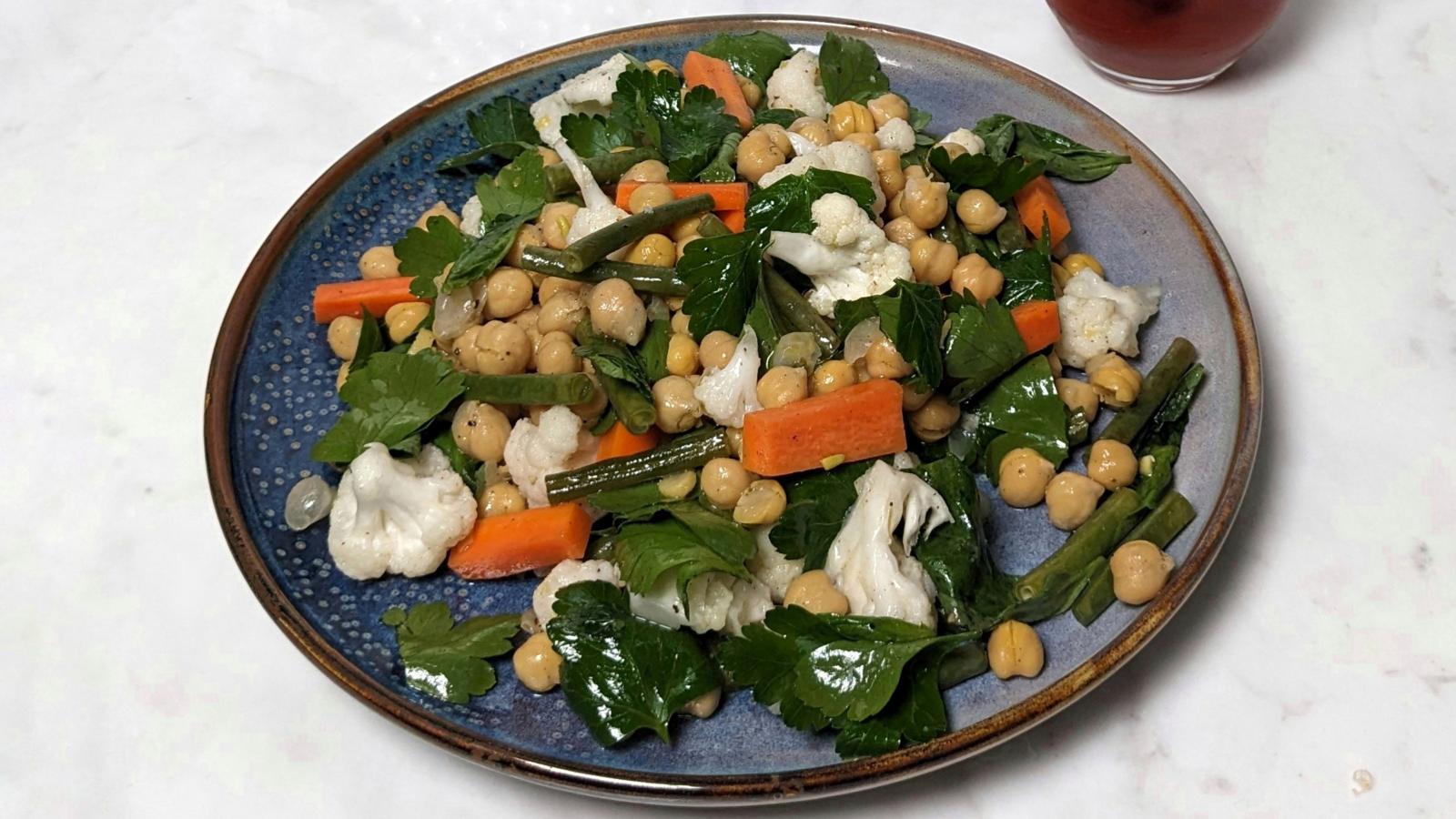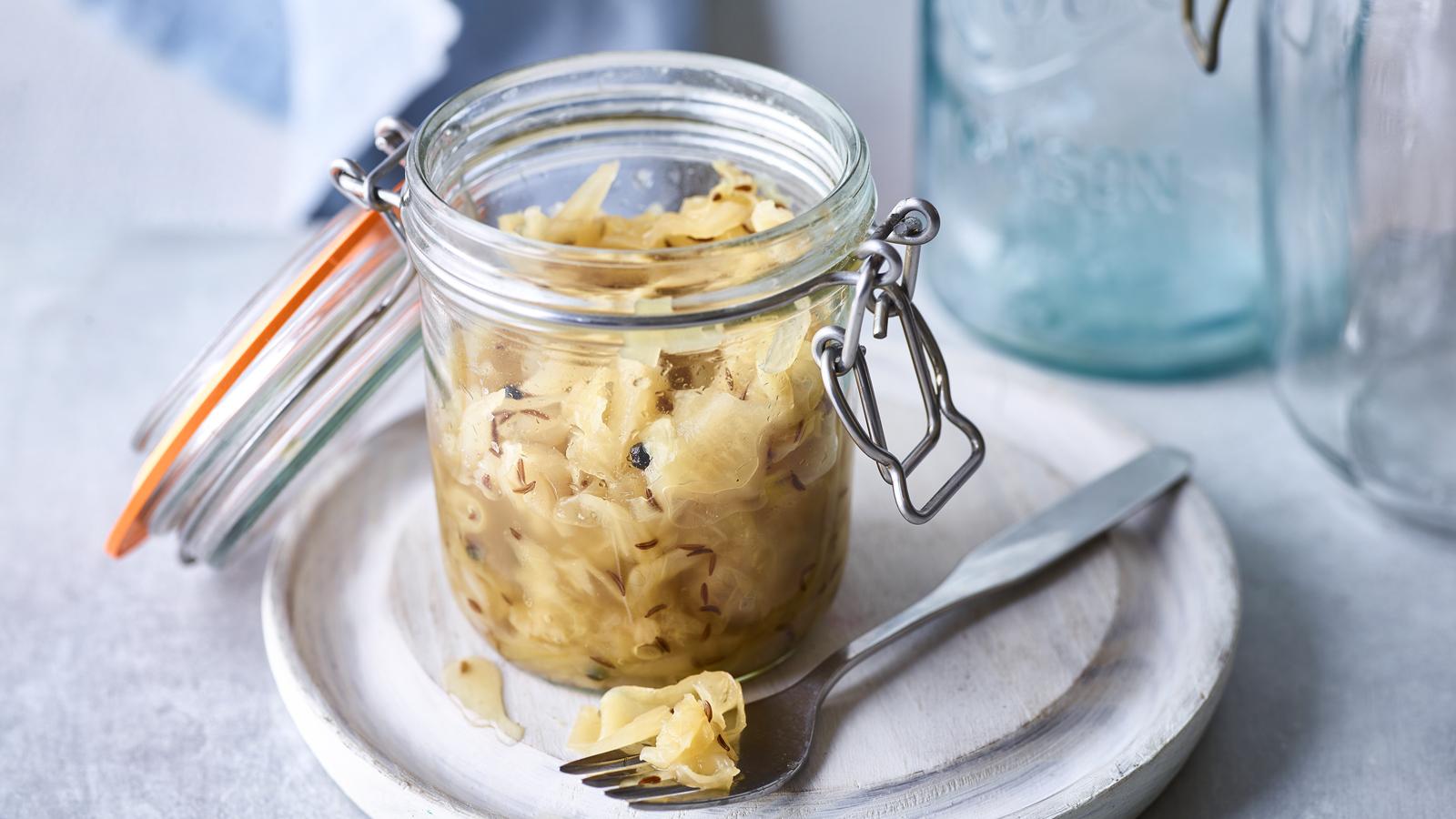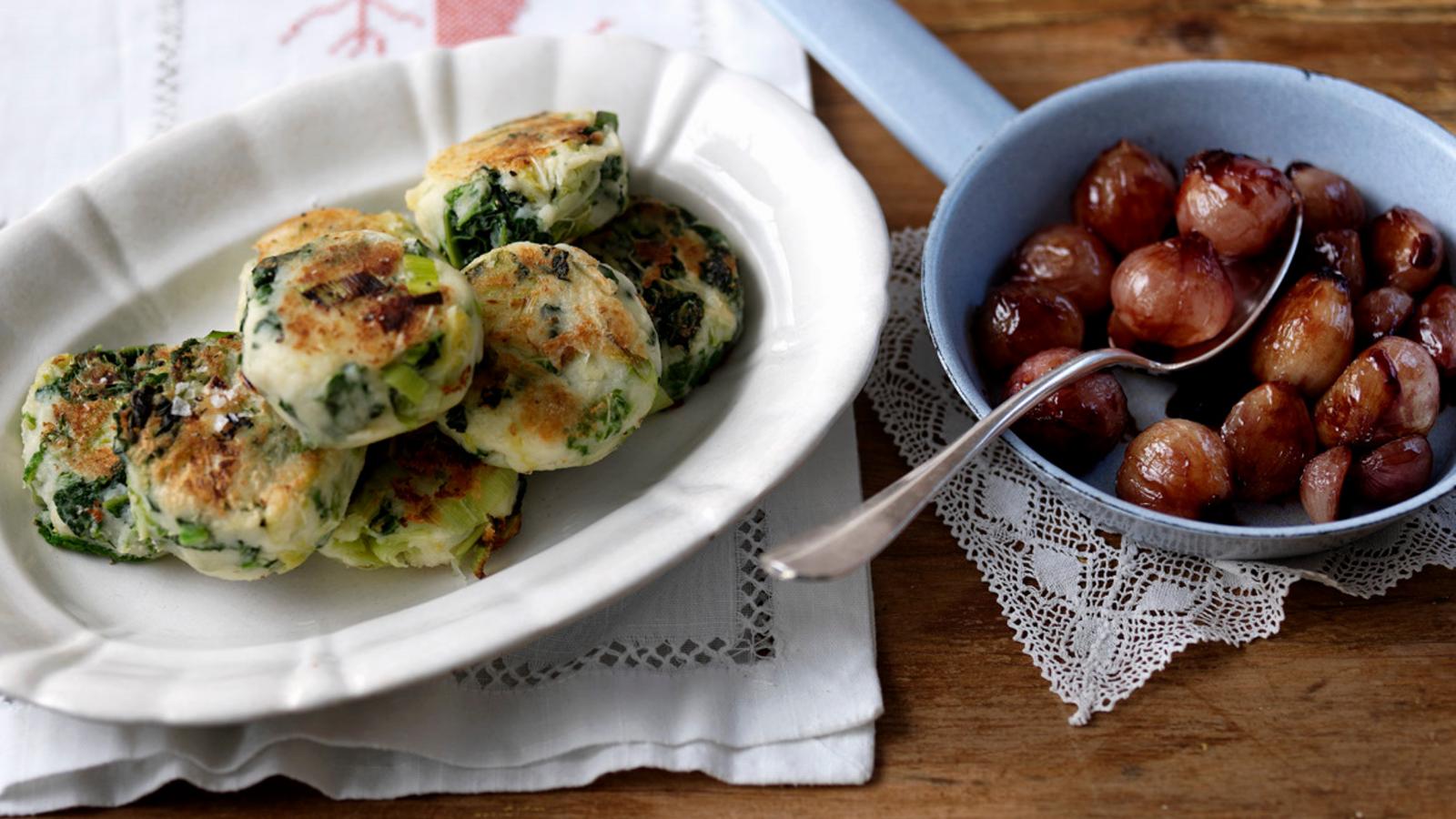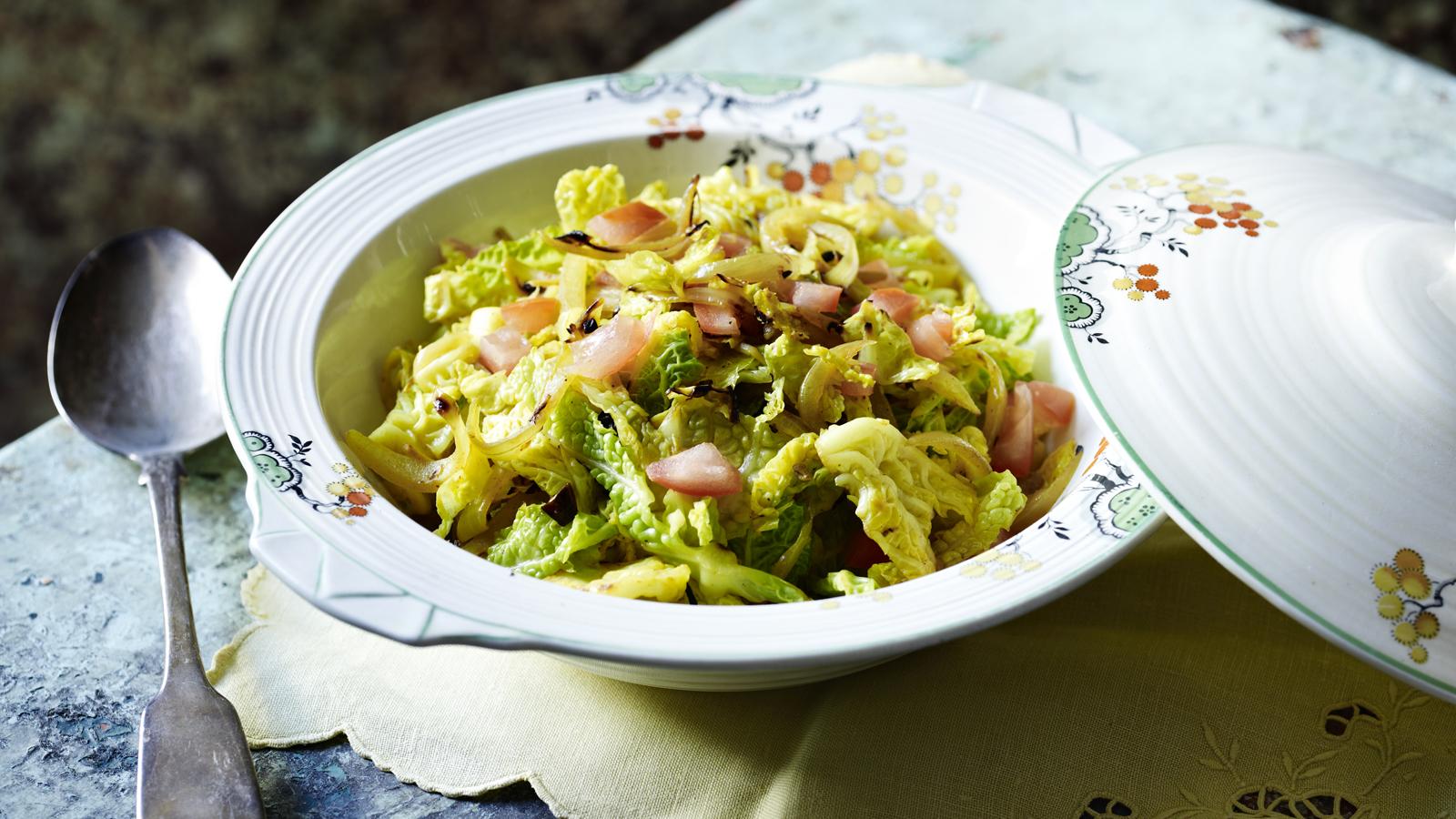Fermented vegetables and kimchi

- Prepare
- overnight
- Cook
- no cooking required
- Serve
- Makes 1 litre/1¾ pint fermented vegetables and 1 litre/1¾ pint kimchi
This recipe makes two kinds of fermented vegetables – wet fermented vegetables and dry fermented kimchi.
Please note, if mould forms on either of your ferments at any point, discard the batch and start again.
From Saturday Kitchen
Ingredients
For the fermented vegetables
- 1 small cauliflower, cut into florets
- 8 carrots, peeled and cut into same size pieces as the florets
- 500g/1lb 2oz green beans, cut into same size pieces as the florets
- salt (3.5% of total weight of vegetables and water, see below)
For the kimchi
- 500g/1lb 2oz sweetheart or hispi cabbage, shredded into 1cm/½in pieces
- 100g/3½oz carrot, peeled and grated or julienned
- 100g/3½oz red radishes, quartered
- salt (3% of total weight of vegetables, see below)
For the kimchi paste
- 3 spring onions, separated into green parts (thinly sliced), white parts (cut into chunks) and roots (thoroughly cleaned)
- 3 garlic cloves, roughly chopped
- 15g/½oz fresh root ginger, peeled and roughly chopped
- ½ apple, roughly chopped
- 1 tbsp caster sugar
- 25g/1oz coarse gochugaru (Korean chilli flakes)
- 1 tbsp red miso
Method
To make the fermented vegetables, fill a 1 litre/1¾ pint jar with the chopped vegetables, leaving a 5cm/2in space at the top. Pour water into the jar until it just covers the vegetables.
Make a note of the combined weight of the water and vegetables, minus the jar, and then work out 3.5% of this weight. Add this amount of salt to the jar, stir everything once and then close the lid.
Leave the jar to ferment at room temperature for around a week, then store in the fridge. Do not leave somewhere cold or this will prevent fermentation.
If you see a lot of bubbles forming after a few days, open the jar lid to let some of the gas escape and close it again. Repeat every few days.
To make the kimchi, put the cabbage, carrot and radishes in a bowl and weigh them. Work out 3% of this weight, minus the bowl, and add this amount of salt to the mixture. Massage it into the vegetables for 5–10 minutes. This will start the natural brining process.
Leave for 1 hour, giving the mixture a squeeze and a flip halfway through to ensure the vegetables have wilted. There should now be a brine at the bottom of the bowl.
While the brining is happening, make the kimchi paste. Blend all of the paste ingredients, except the green parts of the spring onions, until it becomes a thick paste.
Squeeze the vegetables out and reserve the brine. Combine the drained vegetables with the spring onion greens and the paste in a large bowl.
Add 150ml/5fl oz of the reserved brine to the bowl and mix thoroughly.
Put the mixture into a 1 litre/1¾ pint jar and pack everything down to minimise air pockets. Close the lid.
Ferment at room temperature for a minimum of 2 days and up to 10 days. The flavours will mellow, so taste it daily. Once happy with the sourness, chill in the fridge. If you are dipping in regularly, you may inadvertently introduce other bacteria to the jar, so it's best consumed within a couple of weeks.
Recipe tips
To prepare the jars, wash them out thoroughly with soap and warm water and leave to air dry before use.
The fermented vegetables can be used in a winter salad. Just drain some of the fermented vegetables and mix with some chickpeas, seasonal herbs and olive oil, then season with salt and pepper.
The kimchi can be used in a Bloody Mary cocktail. Blitz up 25g/1oz kimchi with 20ml/¾fl oz kimchi brine and strain. Add this to a jug full of ice with 100ml/3½fl oz tomato juice, 1 tbsp lemon juice, a dash of tabasco, a dash of fish sauce (or vegetarian alternative) and a pinch of celery salt. Add vodka to taste. Stir until the outside of the jug feels cold, then strain into two tall glasses. Garnish with celery sticks and a little more kimchi.




